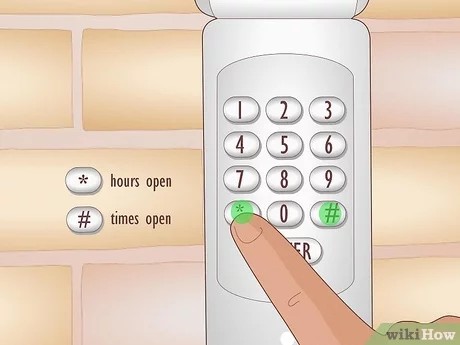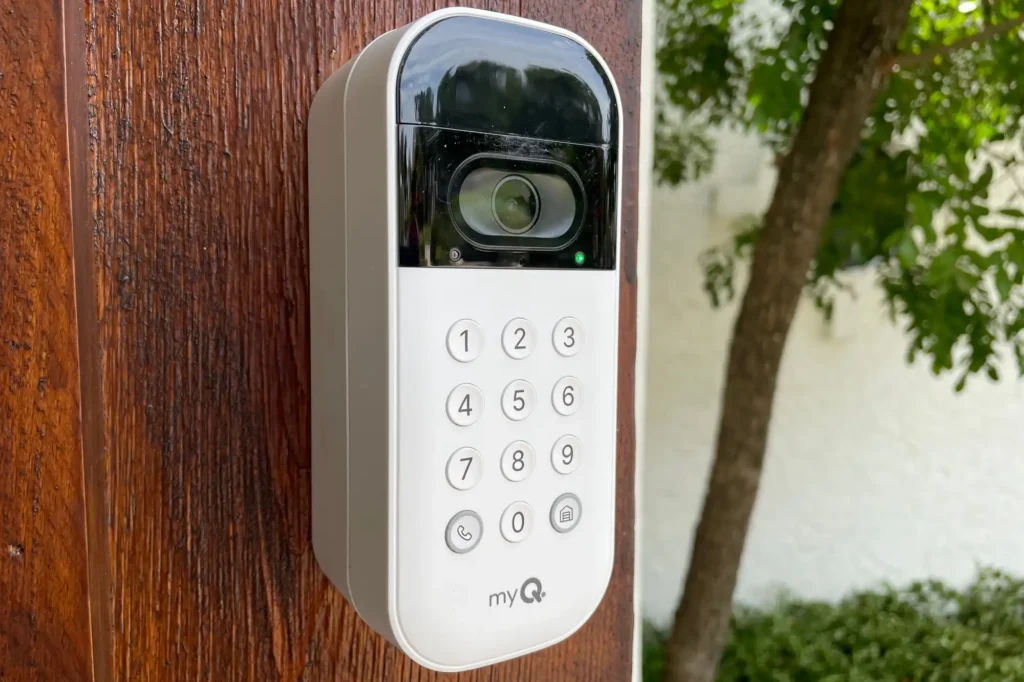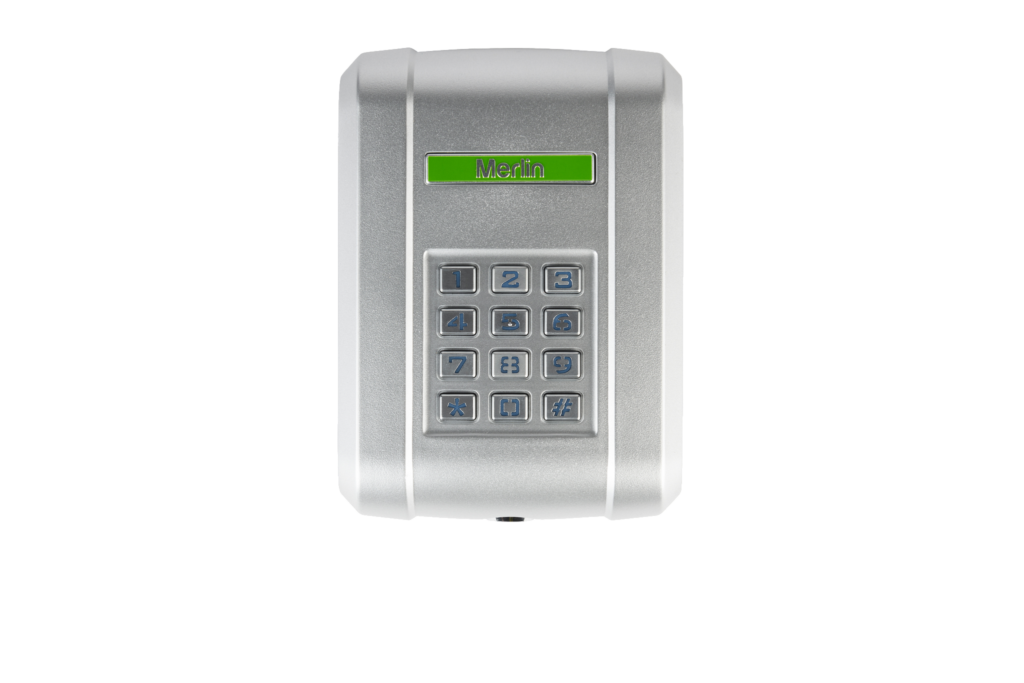Looking for a Katy, TX, garage door keypad solution? We offer reliable installation, repair, and programming services to enhance security and convenience.
A garage door keypad can be an incredibly convenient tool, offering keyless access to your garage with just a simple code. Whether you’re coming home with your hands full or heading out for a jog without needing keys, a garage door keypad allows easy, secure entry. In this guide, we’ll walk you through everything you need about garage door keypads, from the various types available to installation tips and common troubleshooting solutions.
A garage door keypad sends a signal to the opener when you enter your personal identification number (PIN), allowing your door to open or close easily. With different options like wireless, wired, smart, and even solar-powered keypads, choosing the right one means considering features like compatibility, security options, and battery life to best suit your needs.
With a reliable garage door keypad, you gain the peace of mind of secure access without the hassle of keys. Keep reading to discover the best keypad for your home, tips for maintaining it, and ways to maximize security and convenience for years of easy access!
What is a Garage Door Keypad?

A garage door keypad is installed outside your garage door. It allows you to open and close the door by entering a personal identification number (PIN). It eliminates the need for keys or remotes, making access easier for multiple users. Garage door keypads are typically mounted on the wall next to the garage door, and they’re weatherproof, ensuring they can withstand outdoor conditions. Many models are wireless and battery-powered, connecting directly to the garage door opener for easy installation.
How It Works
Garage door keypads operate through radio frequency signals or Wi-Fi (depending on the model) that communicate with the garage door opener. Once the correct PIN is entered, the keypad sends a signal to the opener, prompting it to open or close the garage door. Most keypads also offer temporary or guest PIN options, allowing you to set access codes for visitors, service providers, or family members.
Benefits of Installing a Garage Door Keypad
If you’re wondering whether a garage door keypad is worth the investment, consider the following benefits:
- Convenience: With a garage door keypad, you can easily access your garage without the need for a remote or keys. This is particularly handy for families with multiple members or people who frequently forget their keys.
- Enhanced Security: A garage door keypad offers increased security by allowing you to set a unique PIN for access. You can change the code as often as needed, ensuring that only authorized individuals have entry.
- Guest Access: Many keypads come with temporary PIN options, which let you grant access to friends, family, or service providers without giving them a permanent code.
- Keyless Entry for Outdoor Activities: For those who enjoy jogging, biking, or other outdoor activities, a keypad lets you leave your keys at home, knowing you can still access your garage when you return.
- Backup Entry: If you lose your garage door remote or if it stops working, the keypad provides an additional access point, ensuring you’re never locked out.
Types of Garage Door Keypads
Garage door keypads come in various types, each offering different features. Here are the main categories:
1. Wireless Keypads
Wireless keypads are the most common type and are easy to install since they don’t require wiring. They typically operate on battery power and communicate with the garage door opener using radio frequencies.
2. Wired Keypads
Wired keypads require a direct connection to the garage door opener. While they offer reliable connectivity without batteries, installation can be more complex as it involves running wires from the keypad to the garage door opener.
3. Smart Keypads
Smart keypads connect to your home’s Wi-Fi network, allowing you to control the garage door through a smartphone app. These keypads often feature additional security options, like real-time notifications, remote access, and activity tracking.
4. Solar-Powered Keypads
Some garage door keypads are solar-powered, ideal for homes in sunny regions or for those who want an eco-friendly option. These models have a small solar panel that charges the battery, reducing the need for manual battery replacements.
Key Features to Look for in a Garage Door Keypad
When shopping for a garage door keypad, here are some key features to consider to ensure you’re getting the most value for your investment:
1. Compatibility with Your Garage Door Opener
Not all keypads are compatible with every garage door opener, so it’s important to check whether the keypad you’re considering works with your existing system. Many keypad models are designed to work with specific brands, like LiftMaster, Genie, or Chamberlain, but some universal keypads are also available.
2. Security Options
Choose a keypad with solid security features, such as PIN encryption or rolling codes. Rolling codes change each time the PIN is entered, reducing the risk of code hacking or duplication. Look for keypads offering temporary or one-time PIN options for added flexibility.
3. Battery Life and Power Source
Most wireless keypads use standard AA or AAA batteries, which should last several months. However, solar-powered models may be a good option if you’re concerned about battery replacement. Choosing a keypad with a low-battery indicator is also worth it, so you’re never caught off guard.
4. Backlit Keypad for Nighttime Use
A backlit keypad is a valuable feature if you frequently use your garage at night. It illuminates the keys in low-light conditions, making it easier to enter your code accurately and quickly.
5. Weather Resistance
Since the keypad will be mounted outside, make sure it’s weather-resistant. Look for a model with a sturdy, waterproof design that can withstand rain, snow, and extreme temperatures.
6. Range and Signal Strength
The keypad’s signal range should match the distance between where the keypad is mounted and the garage door opener. Most wireless models offer a range of about 25–50 feet, which can vary. Check the keypad’s range to ensure reliable connectivity if you have a larger garage or an older garage door opener.
How to Install a Garage Door Keypad
Installing a garage door keypad is relatively simple, especially for wireless models. Here’s a step-by-step guide to help you through the process:

1. Gather Your Tools
You’ll need a drill, a screwdriver, and a keypad kit for a basic installation. Check the manufacturer’s instructions for any additional tools or hardware required.
2. Choose a Mounting Location
Select a convenient location on the exterior wall next to your garage door, about 5 feet from the ground, for easy access. Avoid placing the keypad too close to metal surfaces or electronic devices, as these can interfere with the signal.
3. Install the Keypad
Use a drill to make pilot holes for the screws. Align the keypad with the holes, then use screws to secure it in place. Be sure to follow the manufacturer’s mounting instructions for a secure fit.
4. Program the Keypad
Refer to the keypad’s user manual for programming instructions, as this process varies by model. You’ll typically need to set a master PIN and sync the keypad with the garage door opener. You may also need to connect to Wi-Fi and download a mobile app for smart keypads.
5. Test the Keypad
Enter the PIN to ensure the garage door responds correctly. Make any necessary adjustments to the placement or programming, and then test the keypad several times to confirm consistent performance.
Maintaining Your Garage Door Keypad
To keep your garage door keypad functioning well over the long term, follow these maintenance tips:
- Regularly Clean the Keypad: Dust, dirt, and moisture can accumulate on the keypad over time. Use a soft, damp cloth to clean the buttons and surrounding areas gently.
- Check the Batteries: Most wireless keypads need new batteries once or twice a year. A low-battery indicator can help, but it’s a good idea to check the batteries every few months as a precaution.
- Inspect for Weather Damage: If you live in an area with extreme weather conditions, check your keypad for cracks or other signs of damage. Weatherproof keypads are durable, but it’s wise to inspect them periodically to ensure they remain secure.
- Reprogram as Needed: Change your PIN occasionally to maintain security, and reprogram it if you suspect someone unauthorized may have learned the code. If you move into a new home with an existing garage keypad, reprogram it immediately for added security.
Troubleshooting Common Keypad Issues

Occasionally, you may experience issues with your garage door keypad. Here are some common problems and solutions:
1. The Keypad Doesn’t Respond
If the keypad is unresponsive, start by checking the batteries. Replace them if necessary. For wired keypads, check the wiring for any loose connections. In the case of smart keypads, make sure the Wi-Fi signal is strong and stable.
2. The Keypad Won’t Sync with the Opener
If the keypad isn’t communicating with the garage door opener, try reprogramming it. Sometimes, a power outage or battery change can disrupt the connection, so following the reprogramming steps in your user manual should resolve the issue.
3. The PIN Doesn’t Work
If you cannot open the garage door with the PIN, ensure you’re entering the code correctly. Try reprogramming the keypad and setting a new PIN. If the problem persists, consult the manufacturer’s troubleshooting guide or contact a professional.
4. Signal Interference
Signal interference can sometimes cause the keypad to malfunction. Ensure the keypad is not too close to other electronic devices or metal objects, which can interfere with its signal.
Frequently Asked Questions (FAQs) on Garage Door Keypad
Why is a garage used?
Garages store and protect vehicles, tools, and other household items. They offer a secure space, often providing insulation and shelter from the elements. Homeowners also use garages as workshops, gyms, or storage areas, making them practical for various needs beyond vehicle storage.
What is the concept of a garage?
The concept of a garage is to provide a sheltered, secure space for storing vehicles and other belongings. It originated as a separate structure or part of a home for storage and security. Today, garages serve multiple functions, from housing cars to offering additional space for various activities.
Why is a garage called a garage?
The term “garage” comes from the French word “garer,” meaning “to shelter” or “to protect.” It evolved in the early 20th century when people needed dedicated spaces to store automobiles. The name reflects its purpose: providing a secure, protected space for vehicles and other belongings.
What is the meaning of garage in one word?
In one word, “garage” means “shelter.” It’s a protected space designed primarily for vehicles, providing security and storage. The term represents a versatile area for additional uses beyond just housing cars.
What is the old meaning of garage?
Historically, a garage referred to a building or space specifically for storing vehicles, similar to a carriage house. As automobiles became common, garages evolved to meet storage and security needs. While the purpose remains similar today, garages are now integral parts of homes with expanded uses.
Conclusion
A garage door keypad is a valuable addition to any home, providing secure, keyless access and convenience for busy families and active individuals. Whether you’re installing a keypad for the first time or upgrading to a more advanced model, this guide has covered everything you need to make an informed decision and keep your keypad running smoothly.
With proper installation, maintenance, and troubleshooting tips at your fingertips, you can enjoy the ease and security a garage door keypad brings for years to come. So, next time you head out for a jog or arrive home with a full carload, you can rest easy knowing that access to your garage is just a few button presses away.
End Note
A garage door keypad adds convenience and extra security to your home, letting you enter with a code instead of a key. At Lopez Garage Door, we offer reliable keypad installations and services to make your life easier. Whether you’re setting up a new keypad, troubleshooting an existing one, or just exploring options, our team is here to help every step of the way.
We’re experts in all things garage doors, from new installations to high-quality openers. Check out our gallery for examples of our work, and discover more about our approach on the About Us page. We share tips and insights on our blog to help you keep your garage door functioning at its best. Ready to install a new keypad or need assistance? Visit our Contact Us page and see how we can bring added security to your home.

